
Around St. Albans there's numerous satellite dishes perched on people's homes, or peeking over the fence from their backyard. They tend to look like this:
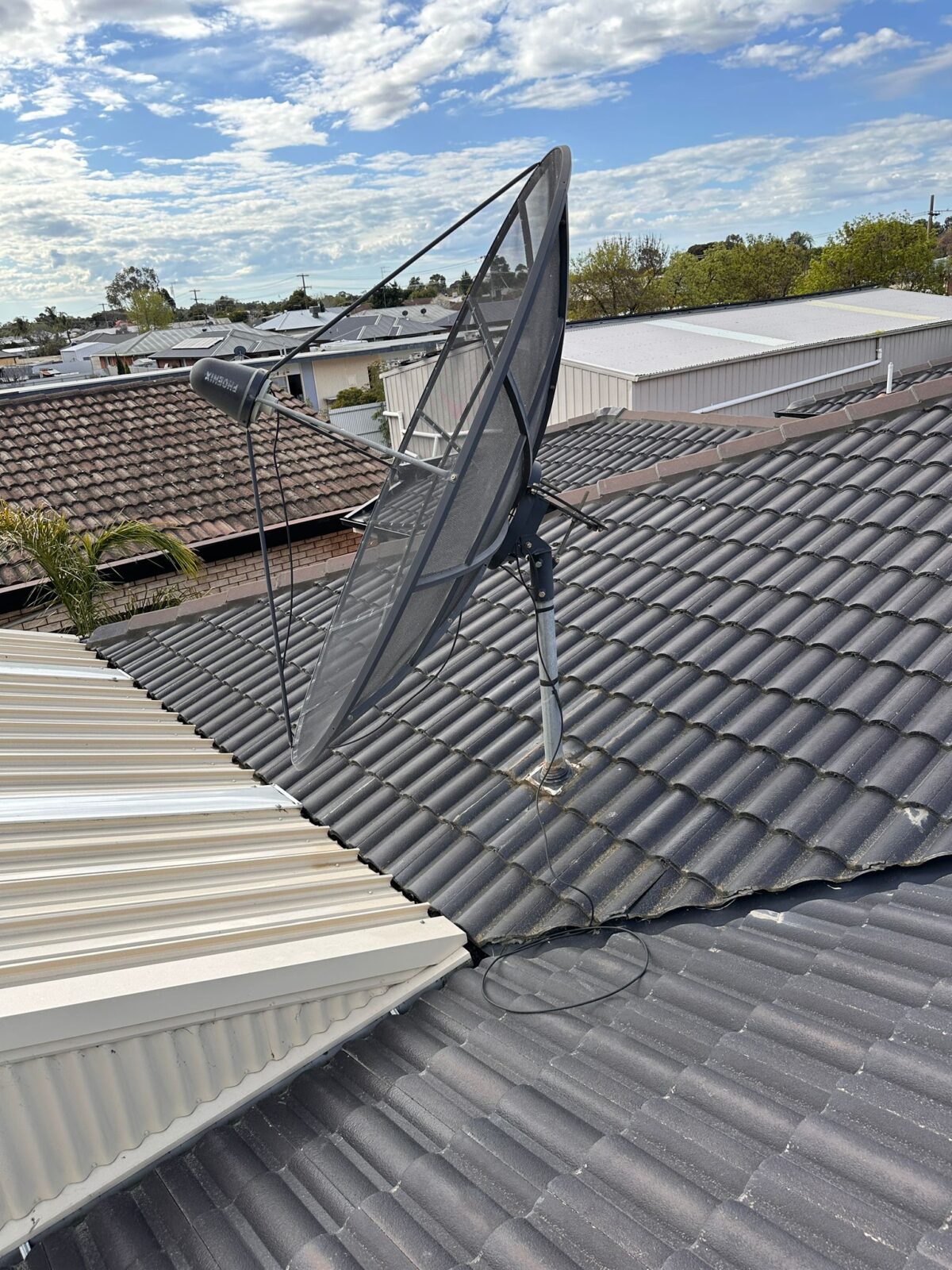
I wondered why there's so many around and what they're used for, as I knew they're not for Foxtel as most of this area has HFC cable in the street, so no need for a dish. It turns out, people are getting these dishes installed in order to watch free to air TV from overseas. Due to the high amount of non-English speakers around here, it's no surprise there's heaps of dishes too. People wanna watch their stories! They could also be pirating Foxtel, but I'll assume everyone is legit and watching unencrypted satellite feeds.
Naturally, I want to get in on this action. There's TV channels floating around in the air that I'm not getting access to! I want in. So I did a bit of research as to how satellite TV works, what's actually on it and how much it costs. It's fascinating, but also kind of an extravagant exercise in nerdery, unless you speak an Asian language. But, because it's kinda cool and I spent like, 2 days reading up on it, I'll explain it here, best as I can.
Understanding how satellites work helps in understanding how satellite TV works. I assume you know what a satellite is, they look like this and spin around the Earth in space (that's Optus D10 by the way, which will be launched in 2013):
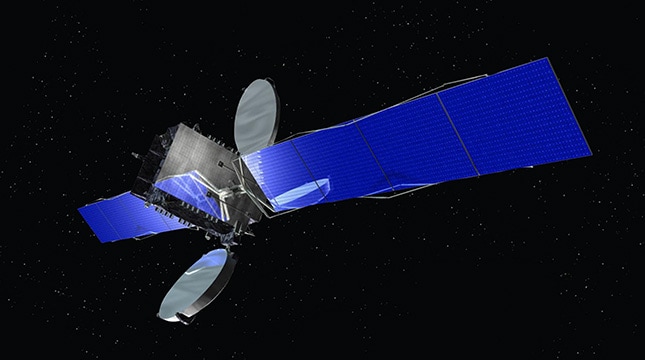
I thought that the satellite position changes as it spins around the earth and wondered how you continue to watch something as the satellite goes to the other side. Some sort of satellite swapping maybe - I had no idea. Well, I forgot that the Earth spins too, as do the satellites. If the satellites orbit the Earth at pretty much the same speed the Earth spins, then you have what's called a geostationary satellite, which ends up just hanging over the same spot of Earth constantly. Duh. This animation from the Wikipedia page about geostationary orbit makes it clear:
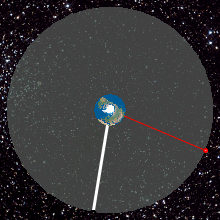
So because the satellite is spewing microwaves on to a certain portion of the Earth as the satellite's location is fixed, that means only certain satellites are accessible from your position. This also means that all the cool shit from the US & UK are unfortunately, out of range. Those satellites can't physically broadcast to us here in Australia, so we miss out on their English speaking goodness. That's okay though, as there's still dozens of satellites spinning around our corner of the globe.
Satellites transmit TV over either Ku-Band or C-Band, the main difference being that Ku-Brand broadcasts are more localised and C-Band are wide. There's a couple of Ku-band satellites broadcasting into Australia (mainly for Foxtel), but most of the international stuff is on C-band. Ku dishes are most of the time, the solid, smaller ones, with the C-band dishes, bigger and made out of a mesh. You can apparently get combo Ku & C band dishes, but they suck.
Each satellite has on it dozens of radio transmitters that broadcasts a signal - you simply use your dish to tap in to the signal. Exact same way you do it with a TV and your antenna, just that the antenna now is a big-arse dish and the frequencies you search for are much more varied. Each satellite carries different broadcasts and different shows. The broadcast protocol is similar to regular TV too, DVB-S and DVB-S2 (regular TV is DVB-T), and uses MPEG2 and MPEG4 like regular TV also. Simply get a set top box that supports those protocols and away you go.
Keeping in mind not all satellites broadcast to Australia, I had to find out which ones do, so I can find out what they broadcast and get a feel for what I can actually watch. To do this, I visited Satbeams. Satbeams lists all the satellites rotating the earth and gives a beam map (aka, a satellite footprint), which shows each satellite's range. You place a pin over where you are and it will show if the satellite you've selected broadcasts there. Pretty awesome:
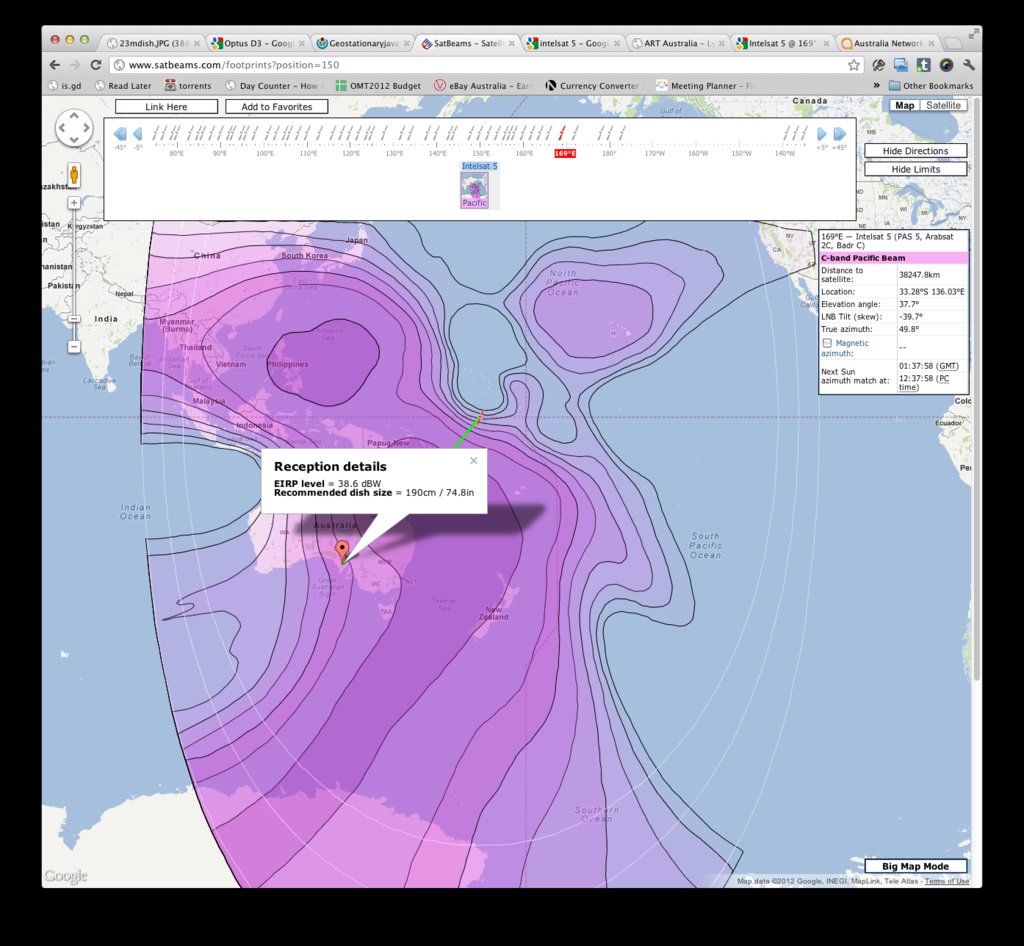
Only satellites between 66°E and 118°E can broadcast to Australia (the Earth is round remember), so I checked all those out. There's about 35 that project themselves onto Melbourne - a few reach say, Perth, or Brisbane, but not down far south as Melb. Using that list of satellites, I can then go to a site like Tracksat or Lyngsat and view which birds carry what channels. Tracksat is good, as it lets you filter by free to air (aka unencrypted stuff). One of the biggest satellites is Intelsat 8, which has over 250 "channels". Let's take a look at what we would be able to see if we pointed a dish at it.
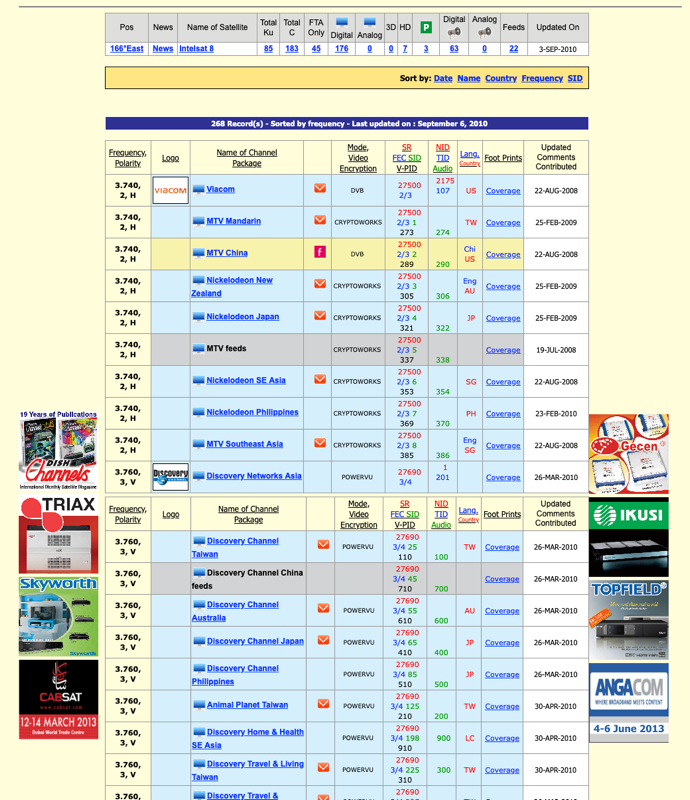
The colours of each row denotes if it's SD, HD, encrypted or free to air. There's also a weird one called "feeds" - these are the raw feeds news, or live events will use when they do a satellite broadcast. So let's say there's a news reporter for the ABC out in the bush and they're doing a live cross for the 7pm news - the crew will send a feed up to the satellite, then it will be sent down again to the ABC's broadcast HQ where it's compiled into a terrestrial broadcast for us to watch. A nice thing about having a satellite dish is that you can tap in to these feeds and watch them before they're mixed into the main program (so reporters milling around, presenters during the ad breaks, etc.). Feeds also have on them special events some times, but mostly it's for news.
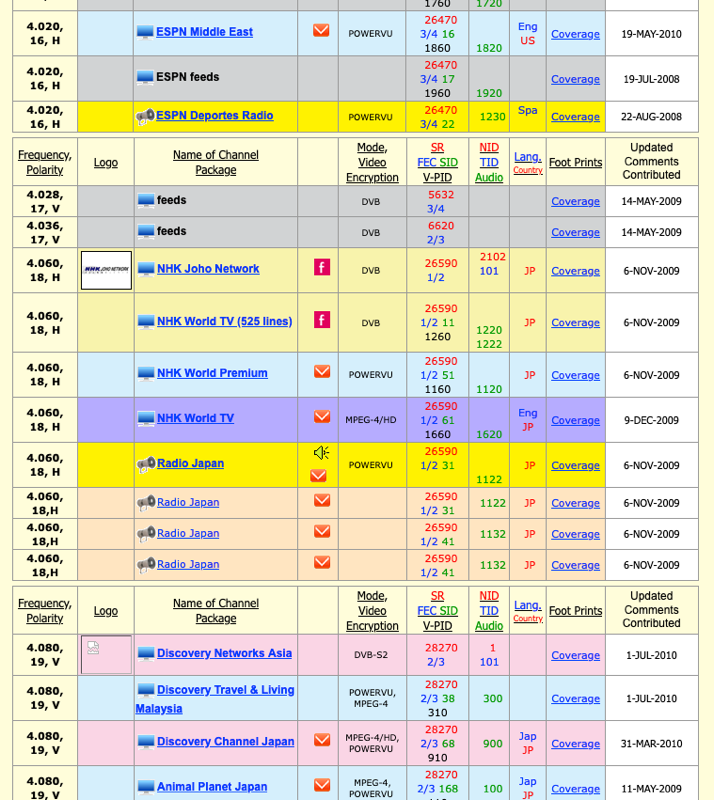
As you can see, there's also many encrypted channels, which are usually for pay TV networks. There's radio stations as well, if you're into that (dunno why, every radio station broadcasts to the Internet these days don't they?). The main thing I'm after though, are the free to air channels. They're all digital these days too, which helps, but there's not many HD that are unencrypted.
On Intelsat 8 for example, there's only 3 unencrypted HD channels - two test cards (a still pic for testing) and NHK World (Japan's equivalent of SBS), which is apparently awesome quality and quite high bitrate. The rest of the channels are in SD.
So you know how a satellite works and which satellites broadcast into Australia. But to actually watch something, you need a dish to intercept the signal and a set top box to decode that signal.
Now, for me personally, I want access to as many satellites and TV stations as possible. Most people just want say the Vietnamese channels, or the Chinese ones, so they only really need to point their dish at one or two satellites to get what they want and they don't need an as big satellite as the ones with the stuff they want have a strong signal here. But if you want everything physically possible to receive, then you need to point the dish at various satellites many times during the day and you need a big dish to "catch" more of the air. That means a big arse motorised dish.
According to Satbeams, a 4M dish will get almost all the satellites that beam into Melbourne. So I need a 4M-ish dish, cool. Seeing as I want to view what's on many satellites, I need a motorised one, so the dish points at the satellite I want to watch (otherwise, if it's fixed, I can only view one at a time). I'm not 100% sure how motorised dishes work, but there's a motor (duh) on the dish that activates when you tell a device called a positioner (looks like this) to point at a certain satellite. Then the STB can tap in to the specific frequency for the channel you want off that satellite. Check out this video to see how the dish moves:
Obviously, there's a lot of other stuff involved in setting up the dish. You've got it point it at true north and you want it with no obstacles (buildings, trees) in the way. Personally, I'd just pay someone to do it. Let someone who has done it before figure it out - all this stuff with actuators, LNBs, positioners, etc - I don't really care, I just want a setup that gets me access to the most satellites.
The other part of the equation is a set top box. It's pretty much like buying a digital TV STB - as long as it supports MPEG2, MPEG4, and DVB-S and DVB-S2, you're ok. Most have PVR features too, so you can record what's on. There's no EPG however, so you don't really know what's on unless you visit the website of the channel you're watching.
So that's the super-basics of getting satellite TV. I'm tempted to get a big dish and place it in the backyard on a pole so it can get line of sight across the Clarke Belt (the imaginary line all the satellites orbit) and have 300+ channels I can surf around when I'm bored. Most of them are not in English and there's so many Christian channels - but I dunno, it seems kinda cool to watch the raw broadcast feeds and to track these satellites around and peek in on these transmissions floating around us. A professionally installed dish will set me back around $2,000 for the 4m one and an STB. It would be even cooler to try get in to the encrypted channels, but the info surrounding those is so hard to make sense of, I don't know if it's worth it.
